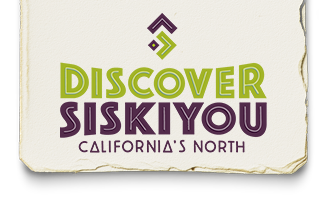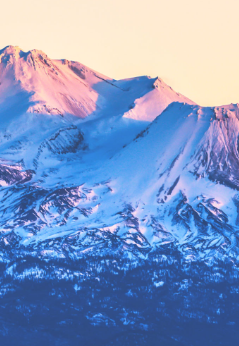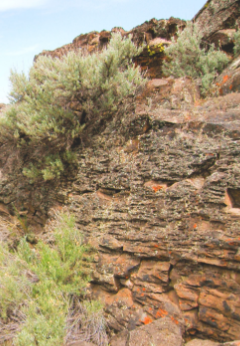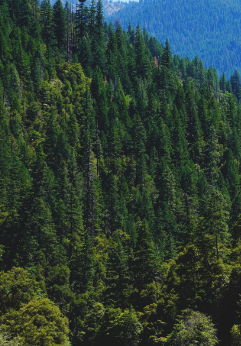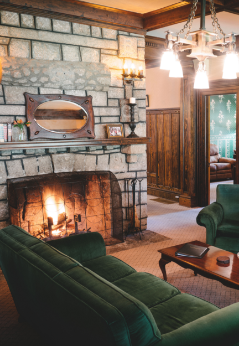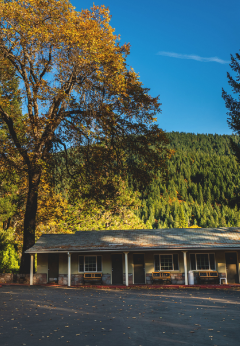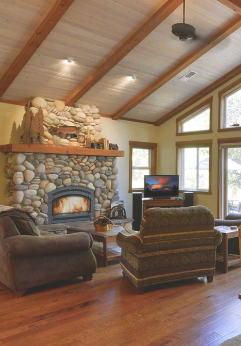About the Author
Sam Kitchen, a devoted Bigfoot researcher and investigator, has spent years exploring the rugged landscapes of Siskiyou County in search of the legendary creature. Drawn by personal experience, local reports, and Native American traditions that speak of a “hairy man” roaming the forests, Kitchen views the Siskiyou region as one of the most compelling Bigfoot habitats in North America. The county’s dense forests, remote mountains, and hidden waterways create the perfect environment for something elusive to thrive, and for Kitchen, every expedition is both an adventure and a pursuit of truth. His work reflects not just a fascination with the unknown, but also a deep respect for the rich cultural and natural history of Siskiyou County.
The Encounter
In 1995, what seemed like a typical, miserably hot summer night in Redding, CA, altered the course of my life forever.
At around 2 am, a friend and I were hanging out in downtown Redding. We had nothing to do. The night had been uneventful and we were bored out of our minds. We decided to drive to Brandy Creek Beach, a popular spot at Whiskeytown Lake where our friends would get together.
As I pulled into the parking lot, it was immediately evident there was no one around. There were no cars in the parking lot. I parked anyway and we began to walk toward the beach.
A sandy path led from the parking lot to the beach. To the right of the path was a small building that contained restrooms. To the left of the path was a stand of trees that obscured our view of the beach.
As we reached the restroom area, my friend became inexplicably apprehensive. He didn’t want to go any further. I continued down the sandy path to the beach without him.
As I cleared the stand of trees on the left, I immediately saw a figure crouched at the water’s edge. On some level, I instantly knew what I was seeing. The figure was humanoid but the way the individual moved his body had an animalistic quality that reminded me of a gorilla I had seen at the zoo years before. As I was a seventeen year old kid preoccupied with the interests of a teenager, Sasquatch was the furthest thing from my mind. Even though I was seeing a massive, bulky body covered in hair, by some psychological alchemy I was able to tell myself this was a person—at first.
I went back to my friend and told him there was someone down there. We briefly discussed the strangeness of the situation. I then walked back in the direction of the mysterious figure.
I recall the sound of my footsteps in the sand. And as I drew closer, I could also hear a pitiful mewling sound the individual was making. And I could feel a very pronounced sense of sadness coming from the individual.
He was squatting much like a person would, with his butt near his heels. His arm rested on his thigh as he slowly twirled something in the water with his right hand—something completely limp and boneless, probably vegetation. His entire demeanor reminded me of that of a child who had just been scolded and was pouting.
Still telling myself this was a person, I walked right up behind him. I called to him, “hey, what are you doing?”
He straightened his back. As he did so, I immediately observed a massive trapezius muscle that extended from his bowling ball-sized shoulders to just below his ears. And at the same time that he straightened his back, the hair on his shoulders bristled—it stood up and separated. I could see that his entire body was covered in this same hair.
He turned his head to look over his right shoulder at me. The word “boxy” immediately came to mind, as his head had a squarish shape to it from my point of view. A straight line connected his heavy brow ridge to a distinctive point at the apex of his crown. And he had a human like nose that was perhaps closer to the face than a human’s would be.
He then turned and nonchalantly resumed twirling the object in the water.
I quickly went back to my friend and said, “that’s a f**king Bigfoot! Let’s get out of here!”
There was another parking lot at an approximate ninety degree angle from the first one. I drove into that lot and shone my headlights onto the beach. At that point I saw nothing. But my friend saw eyeshine from within the tree line.
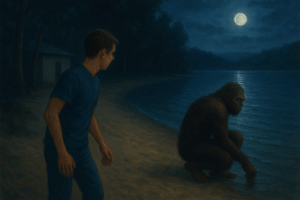
AI Generated Image of the encounter.
Who I am
My name is Sam Kitchen. This summer marks the thirtieth anniversary of that event. After my encounter, I devoured everything I could about archaic human species, and everything I could about the Sasquatch. Three years later, I began hosting a radio show in Southern California dedicated to exploring unexplained phenomena, with a heavy focus on Sasquatch. This show was an early forerunner of my current podcast, “Type 471”. And I am currently filming a documentary about my encounter. I interview Sasquatch witnesses all over the world about their experiences. I have travelled the Pacific Northwest attempting to make contact with them—and I have been successful in that endeavor.
I now live in the Mount Shasta area. I moved here specifically because of the high incidence of Sasquatch encounters and a multitude of other strange phenomena that occur in the vicinity of our mountain.
Whatever the Sasquatch are, I feel comfortable in asserting that they are an ancient and worldwide presence. They have been reported on every human-occupied continent. They are called Yowie in Australia, Yeren in China, Almasti in Russia, Yeti in Nepal. Their appearance and behaviors remain consistent worldwide, with minor variations from region to region, suggesting mere genetic variation or perhaps the existence of various subspecies. This species, over the course of eons, has found a way to succeed and thrive in varying climates and environments all over the world, right under our noses.
Many theories exist as to what the Sasquatch are. Are they a surviving population of Gigantopithecus, a giant ape that sustained itself in the bamboo forests of Asia 300,000 years ago? Well, Gigantopithecus is believed to have been a quadrupedal ancestor of the orangutan, with a divergent, thumb-like big toe and open, catarrhine nose, just like all non-human apes.
The Sasquatch, by contrast, are designed for both quadrupedal and perfect bipedal locomotion. They have an in-line big toe and a hooded nose, just like humans. Whatever the Sasquatch are, all the best evidence suggests to me that they are in the human family tree, and much more closely related to us than Gigantopithecus.
After all, the Sasquatch have language, which I have heard them speak. And, while on a research outing right here in Siskiyou County, one of them said my name.
They are very much like us, and very much unlike us, in ways that most people would find startling—or even traumatizing—if they were to witness.
Sasquatch in Siskiyou
In the very early years of the twentieth century, a railroad lineman working with a group of men in the vast Siskiyou County wilderness went missing one day. He was unaccounted for over the course of several days. Finally, the man reappeared, naked, terrified, and half-crazed. The story he shared of his disappearance was shocking. A wild woman covered in hair had abducted the man. She carried him off into the remote wilderness, finally bringing him to a small canyon with steep rocky cliffs that he couldn’t climb out of. She forced the man to mate with her over and over again. And she prevented him from escaping by licking his hands and his feet raw.
The man died shortly thereafter.
Siskiyou County has a long history of interaction with the Sasquatch, going back long before the arrival of Europeans. The Karuk call the Sasquatch “Makiada”, meaning “stinky relative”. Indigenous communities here and elsewhere report long standing relationships between human and Sasquatch communities, a peaceful coexistence in which they traded with one another. The human-Sasquatch relationship has historically been a complex one, however, as there are also many reports of abduction and forced breeding. Surviving human-Sasquatch hybrid offspring have been reported here in Siskiyou County, elsewhere in the United States, and throughout the world, with a particularly well-documented case in Russia involving a wild woman called Zana by her captors. I won’t go into detail about Zana here, except to say that DNA tests were done on the remains of her children, grandchildren, and one surviving descendent. The results showed intriguing anomalies.
Sasquatches have been encountered in every U.S. state, including Alaska and—amazingly—Hawaii. That being said, the mountain ranges that run through Siskiyou County seem to be among the most active in the country and thereby, the world. Why is that?
The short answer is, I don’t know. But I am aware of a few things that might be significant factors.
Much of the topography of Siskiyou County was carved by glaciation during the last Ice Age. It is a hauntingly beautiful, rugged, unforgiving landscape. When beholding the Siskiyou County landscape, one can’t help but get the sense of vast antiquity—and they’re right. This place belongs to the remote past and has nurtured life and guarded secrets ever since.
There are little pockets of microclimates all over the county. While the weather is doing one thing here, it is doing something else there. Here is forested, mountainous terrain; there is high desert, and over there are verdant fields.
The presence and variety of game is noteworthy. Countless deer are an ever-present food source in our area. Elk herds roam the landscape, as do antelope and bighorn sheep. Sasquatches have been known to make use of black bear too, and we have plenty of them around. Not to mention smaller game, such as turkeys, jackrabbits, squirrels… the list goes on. Sasquatches are opportunists and are bound to thrive in a place of such natural bounty.
Of all the day-to-day survival reasons why Sasquatches may prefer this area, I feel that chief among them is water. Most of our mountainous areas have very high water tables. As such, pristine spring water issues forth from our mountains and flows incessantly. I have invited fellow researchers from out of state to visit some of my research areas here, and they have remarked to me their amazement at such plentiful springs. We have high meadows saturated with water, nurturing vegetation, and quenching the parched. Many rivers have their headwaters or tributaries here. And they all start in pristine mountain streams. Sasquatches like to make their family homes near spring fed creeks, of which we have an abundance.
Emerging Patterns
The skeptics of this phenomenon should note that, while documenting the testimony of witnesses in this area, clear patterns have emerged, both of seasonal movement and of behavior. For example, two women camping alone on a particular road, who did not know each other and were separated in time by about a year and a half, reported to me the same behavior by a Sasquatch who approached each of their camps. This particular road is close to a mountain ridge that extends through widely recognized Sasquatch territory. In each case, the Sasquatch came down from the ridge, snooped around their camps, vocalized, and engaged in behaviors that left the impression that he was looking for a mate.
There is a waterfall very close to that same road. As another example of emerging behavioral patterns, multiple individuals not associated with one another and groups of people have reported to me the experience of seeing dark, bipedal, shadowy figures moving amongst the trees and watching the human activity as people visited the waterfall.
Quite often, people have similar experiences in the same wilderness areas.
Patterns of seasonal movement are also coming to light. Certain areas along Highway 89 south of Mount Shasta become predictably active with Sasquatch activity during the warm weather months. Vocalizations are heard, footprints are seen, and Sasquatch individuals are often witnessed near the highway in very specific spots and at a specific time of year.
The town of Mount Shasta itself receives visits from migrating Sasquatches in the fall, spring and summer. They are heard and seen in and around the pockets of undeveloped land inside the town. Visitors to our area have left their RVs, flashlights in hand, awe-stricken and wondering amongst themselves what tall shadows they have just witnessed moving amongst the trees. Curious structures made of torn off tree limbs are found in these undeveloped areas, clearly of intentional design yet their purpose uncertain. And Sasquatch individuals have been seen by truck drivers bursting forth from these undeveloped areas at full speed and running across the I-5 freeway in a matter of seconds.
It should be noted that the stretch of I-5 between the town of Mount Shasta and the town of Weed six miles to the north is the only stretch of freeway in the area in which the freeway median is forested. I therefore find it to be no coincidence that Sasquatches are often seen crossing the freeway in that same area as they move between the mountain range to the west of the freeway and Mount Shasta to the east of the freeway. They can cross one side of the freeway, take cover in the forested median, then cross the other side.
One can practically mark their calendar as to when these various types of activity will occur in specific locations.
What to look for
For those who hope to find Sasquatch sign in the forest while they are visiting our beautiful area, I would like to point out the similarities and differences between Sasquatch footprints and black bear footprints, and how easy it is to mistake one for the other. Black bears will often leave a “double step” footprint as their hind paw steps partially into the impression they just made with their forepaw. This overlap can very much resemble a large humanoid footprint. But there are tell tale differences to look for. Most obviously, claws marks will often be apparent to those who take the time to look. These claw marks can register differently depending on the type of earth in which the impression has been made. In softer ground, claw marks can be pronounced, curved cavities in the ground at the tip of each toe. In harder ground, claw marks can appear as little dots at the tip of each toe. And sometimes they’re not visible at all.
The next clue to look for is the arrangement of the toes. Black bear toe pads can look quite humanoid in an impression in the ground, but on closer inspection their arrangement is more curved than humanoid toes, with the apex of the curve in the middle. This curve can be seen both at the top of the toes, and beneath the toes where there is a somewhat crescent-shaped pad.
Genuine Sasquatch footprints range from a somewhat rectangular shape to a triangular shape, with the narrowest part at the heel and the widest part at the toes. Black bear footprints tend to be more kidney-shaped, which can be mistaken for a human or human-like instep which the uninformed sometimes assume Sasquatches share alike with humans, which they do not.
The final clue to look for when differentiating a Sasquatch print from a black bear print is much more subtle. You may have to get low to the ground to see it. (Though when you do, do not touch the actual print, make as little contact with the ground near the print as possible, and do not breathe on the print.) A black bear print will quite often reveal a crescent-shaped sliver at the outer edge of the footprint. To complicate matters, this sliver can be made two different ways. It can be made by the crescent-shaped space between the metatarsal pad and metacarpal pad of a black bear’s foot. And it can be made by the overlapping of one paw’s curved outer edge on top of another.
A genuine Sasquatch footprint, by contrast, often has two little “nubs” at the outer edge of the center of the footprint. This is created by a fatty “squeeze out” that occurs along their flexible mid tarsal when they place their weight on that spot.
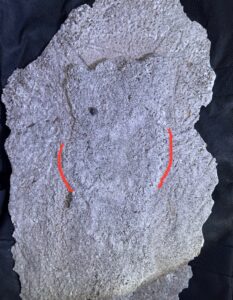
Photo of a suspected Sasquatch footprint I cast with fellow researchers near Highway 89, south of Mount Shasta. Notice the fatty bulge on either side of the foot near the center, highlighted in red.
For those who would actively seek out a Sasquatch encounter, I have a bit of advice: don’t. To inundate the forest with those who wish to sate their own curiosity will only discourage the Sasquatch and drive them further away from people, reducing our ability to learn about them. It isn’t good for the Sasquatch and it isn’t good for their forest environment.
But for those who truly feel called to connect with these awesome and mysterious beings, my advice has much to do with your inner approach to the phenomenon. Enter their space with an attitude of absolute respect. Do not be overly eager to interact with them. Set your own intentions as peaceful and loving. Adopt an attitude that is welcoming to them, an attitude of friendship, while feeling no impatience in your desire to experience them. Be quiet inside. Be still inside. And at the right times, make peaceful sounds. Sing. Laugh. But do not impose yourself on the wilderness. And absolutely do not leave garbage, feces, or anything other than your own footprints.
To the skeptic of this phenomenon, I understand your skepticism. I would never have given Sasquatch a second thought were it not for that fateful night in 1995. Skepticism is, of course, healthy and necessary when attempting to arrive objectively at truth. But skepticism must be tempered with openness to possibility.
To those who dismiss out of hand, I offer no understanding. You cling to your own idea of reality, not reality itself. You hinder humanity’s collective attempt at understanding. Get over yourself.
For those who genuinely care about this subject, please remember me. As I mentioned, my podcast is called “Type 471”. I have taken a long hiatus from my podcast but will resume releasing new episodes to coincide with the upcoming release of my documentary. In the meantime, there are plenty of fascinating conversations to listen to. And I recently created a Facebook group called, “Siskiyou Sasquatch Witnesses”. Please join us.
Again, my name is Sam Kitchen. There is much I would like to show you.
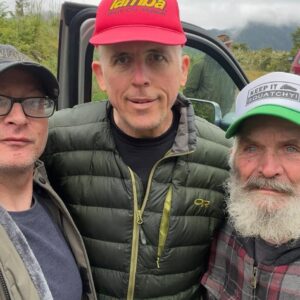
From left to right: Sam Kitchen, James “Bobo” Fay, and our late friend and fellow researcher, Larry Pine.
